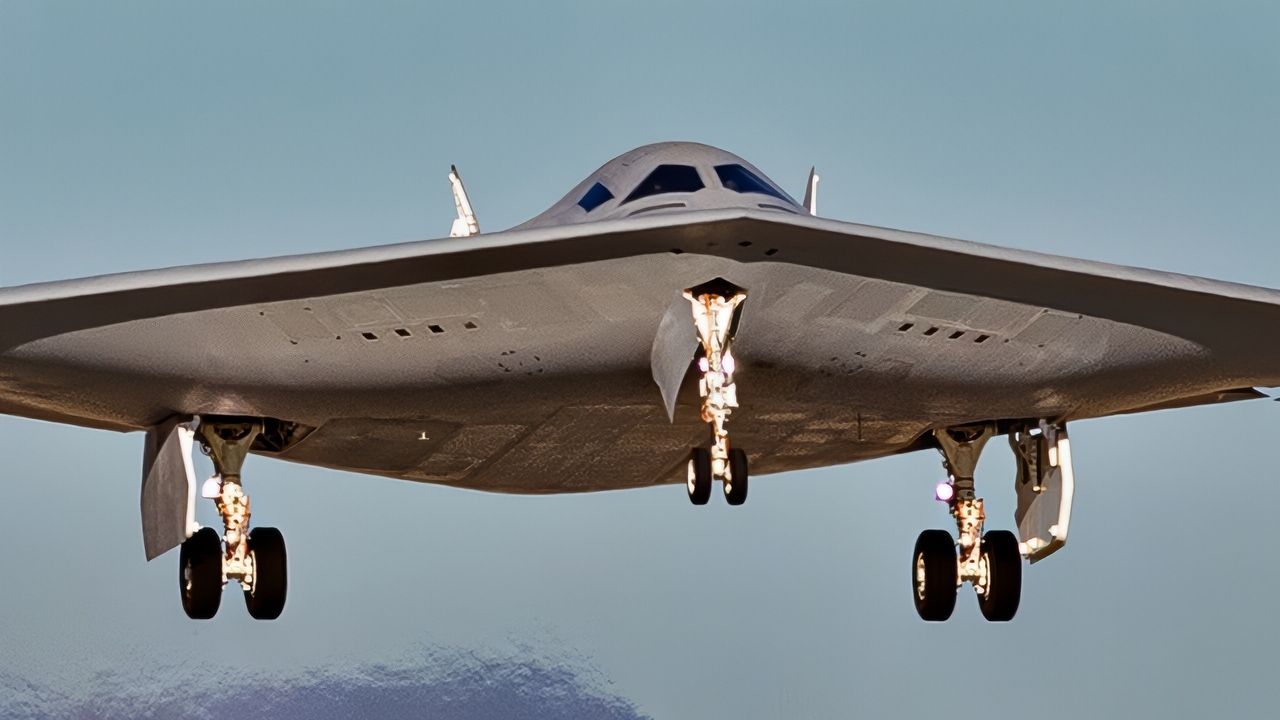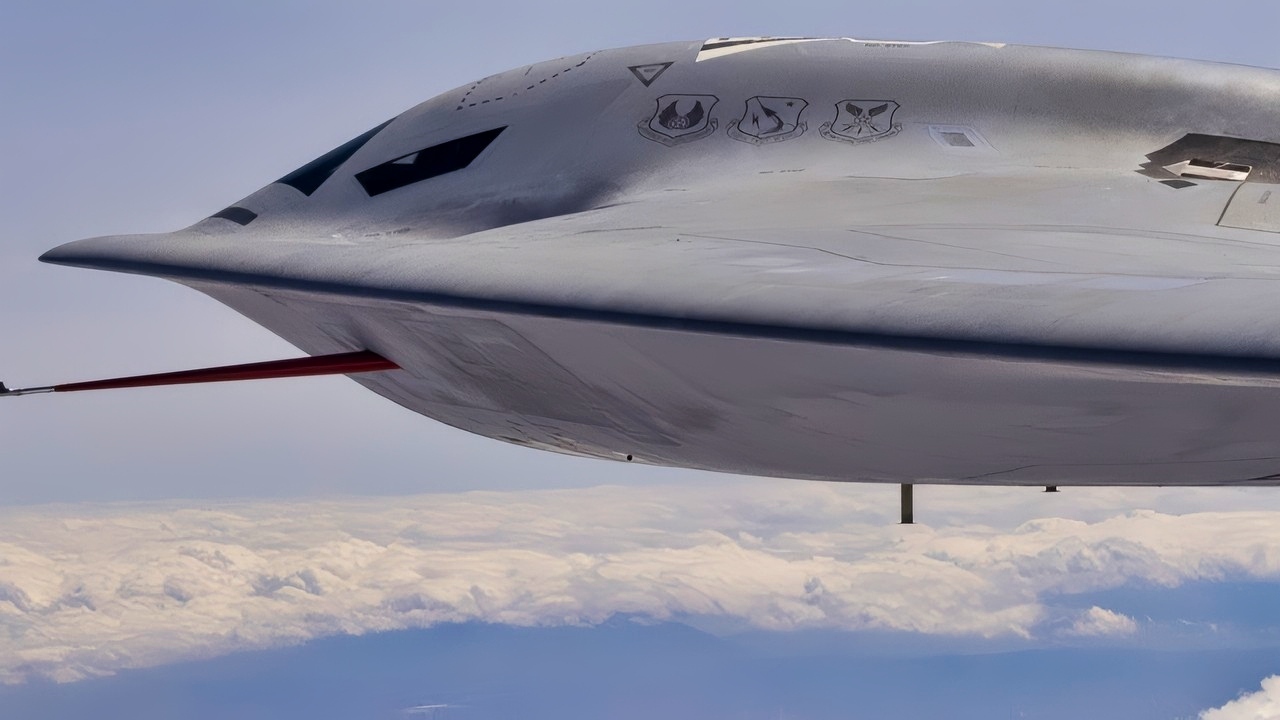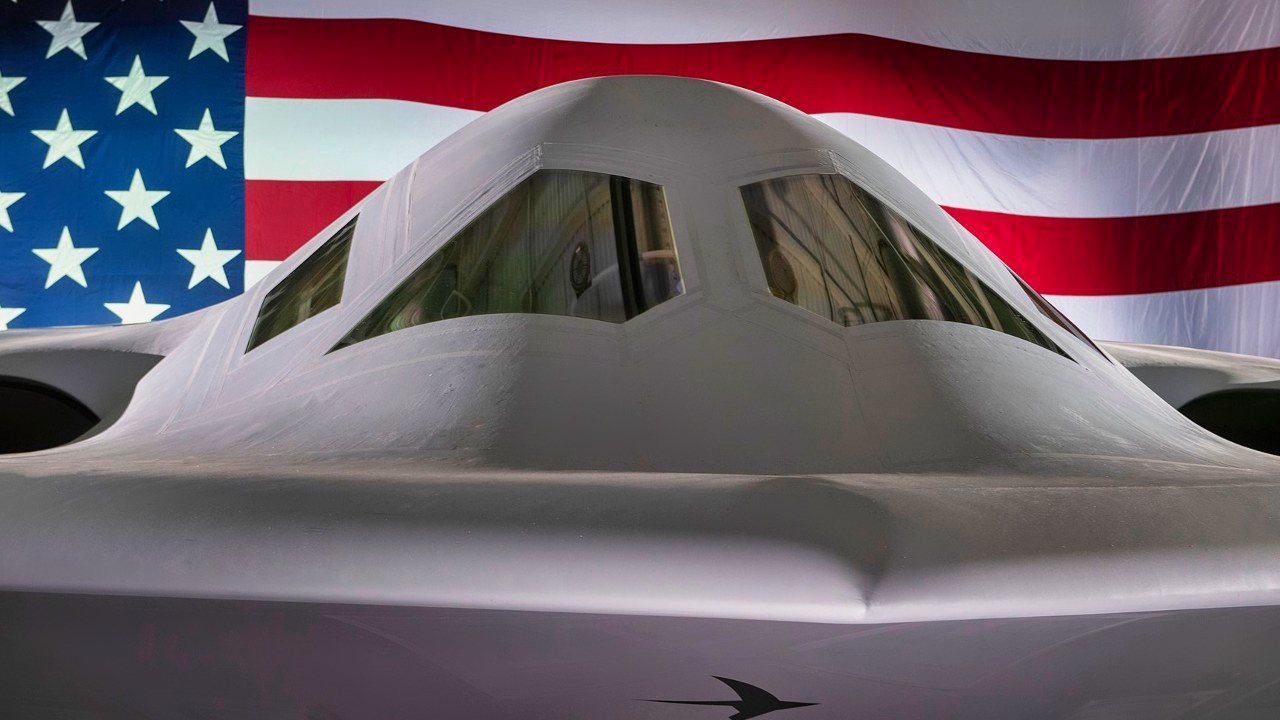Article Summary: There appears to be consensus that a collaborative effort between the Air Force and Northrop Grumman could generate highly sought-after “surges” in B-21 production as the program gains momentum toward large-scale operational service.
-Even though only a small number of B-21s are “airborne” thus far, demand for the emerging stealth bomber seems without limit.

A second B-21 Raider test aircraft takes off, Sept. 11, from Palmdale, Calif., to join the Air Force’s flight test campaign at Edwards Air Force Base, Calif. The addition of the second test aircraft expands mission systems and weapons integration testing, advancing the program toward operational readiness. (Courtesy photo)
-There are many reasons for this, including its expanding operational scope, multi-mission capability, and next-generation stealth and command-and-control technologies.
-The new platform will operate as far more than an attack “bombing” platform, but also control drones and function as a flying aerial node supporting multi-domain networking and information analysis.
B-21 Raider Bomber Production Surge?
The current optimism is driven by the belief that production can surge and “flex” at Northrop’s existing Plant 42 facilities in Palmdale, California.
The manufacturing realities in place have been strengthened immeasurably by Northrop Grumman’s effort to use internal funding to overhaul and streamline production capability to meet anticipated Air Force demand.
In July of 2025, a $4.5 billion legislative package was explicitly approved for B-11 production.
Northrop CEO Kathy Warden has asked that an accelerated production effort involve a revised, fair “deal” to account for the financial risks Northrop has absorbed.

B-21 Raider. Image Credit: U.S. Air Force.
Some have suggested that if the goal is to deliver two new B-21s per year, a second production facility may be needed, yet the actual plans appear unclear.
B-21 in Demand
The B-21 is believed to incorporate an entirely new generation of stealth technology, some of which might be visible to the human eye.
However, the most impactful elements of the B-21 likely lie in what is less visible, as the bomber is likely built on an entirely new generation of computing and sensing.
Senior Pentagon leaders have been clear that the B-21 will control drones from the cockpit and function as a flying, multi-domain command-and-control “node” in the sky, gathering, analyzing, and transmitting time-sensitive combat intelligence across multiple domains in real time.
The bomber can not only deliver ordnance as needed but also direct drones to conduct surveillance, attack air defenses, or even deliver munitions when directed by a human.
The B-21’s AI-enabled onboard computing will need to perform analytics at the point of collection, streamline information, and quickly identify moments of relevance for nearby aircraft, fighter jets, ground-based command and control, and even surface ships as needed.
This requires technologies often referred to as gateways, systems able to pool, gather, organize, and essentially “translate” data between otherwise incompatible sensors and transport layers.

The B-21 Raider was unveiled to the public at a ceremony December 2, 2022 in..Palmdale, Calif. Designed to operate in tomorrow’s high-end threat environment, the B-21 will play a critical role in ensuring America’s enduring airpower capability. (U.S. Air Force photo)
This is done through the use of IP protocols and interfaces engineered to integrate data from different sources.
Open Architecture Engineering
The B-21 is being built to a set of common standards and protocols designed to streamline production, ensure interoperability, and propel modernization, which might make “surging” production more realistic and effective.
Since the beginning of conceptual work and subcomponent prototyping for the B-21, senior weapons developers have prioritized common IP protocols and open architecture to ensure the bomber is positioned to integrate new weapons and technologies as they become available.
The idea is to ensure the platform can be upgraded and modernized as innovations arrive in future years.
For instance, not only will the bomber carry a full arsenal of existing weapons, but its computing and fire control systems will be adaptable, allowing it to accommodate future weapons as well.
What is known so far is that the B-21 will fly with the latest Mod 12 and Mod 13 variants of the classic B-61 nuclear bomb.

The B-21 Raider program is on track and continues flight testing at Northrop Grumman’s manufacturing facility on Edwards Air Force Base, California. The B-21 will have an open architecture to integrate new technologies and respond to future threats across the spectrum of operations. The B-21 Long Range Strike Family of Systems will greatly enhance mission effectiveness and Joint interoperability in advanced threat environments, strengthening U.S. deterrence and strategic advantage. (U.S. Air Force photo)
This will allow crews and decision-makers to operate with greater flexibility, as a modern Mod 13 variant of the B-61 integrates multiple bomb types into a single form factor.
A single bomb can be adjusted for penetrating attack, area detonation, or other blast effects as required by the mission.
The aircraft will also carry the dual-purpose Long Range Stand Off Weapon, or LRSO, a cruise missile capable of targeting and destroying air defenses from stand-off ranges.
The weapon can be used as a conventional or nuclear weapon.
About the Author: Kris Osborn
Kris Osborn is the President of Warrior Maven – Center for Military Modernization. Osborn previously served at the Pentagon as a highly qualified expert in the Office of the Assistant Secretary of the Army—Acquisition, Logistics & Technology. Osborn has also worked as an anchor and on-air military specialist at national TV networks. He has appeared as a guest military expert on Fox News, MSNBC, The Military Channel, and The History Channel.
More Military
The U.S. Military Is In ‘Crisis’
Canada’s F-35 Stealth Fighter Mistake Is Just Around the Corner
The Mach 2.23 F-4G Wild Weasel Has a Message for the U.S. Air Force











Shitpile
November 21, 2025 at 11:46 am
Right now, there are only a total of two (2) b-21 bombers in existence, although air force pundits insist on having 200 pieces of b-21s.
But each piece costs between 500 to 700 million bucks, and thus likely to hinder the development of golden dome.
The b-21 has a shaky destiny, as the current b-2 has only been used to pummel targets in the middle east and south Asia where air defense has b even near non-existent.
Like the b-2, the b-21 is unlikely to survive fighting against those opponents with a robust air defense system.
The number of b-52s shot down over north Vietnam during nam war should serve as a good reminder.
1KoolKat
November 22, 2025 at 4:49 am
The AF wants more B-21s because of their high-tech capabilities, but nothing was mentioned about how they plan to increase or surge production. Even if they could build one per month, it would take a decade to reach the numbers the AF desires. High tech is great, but the issues are complexity, costs, and an inability to surge production for huge numbers.